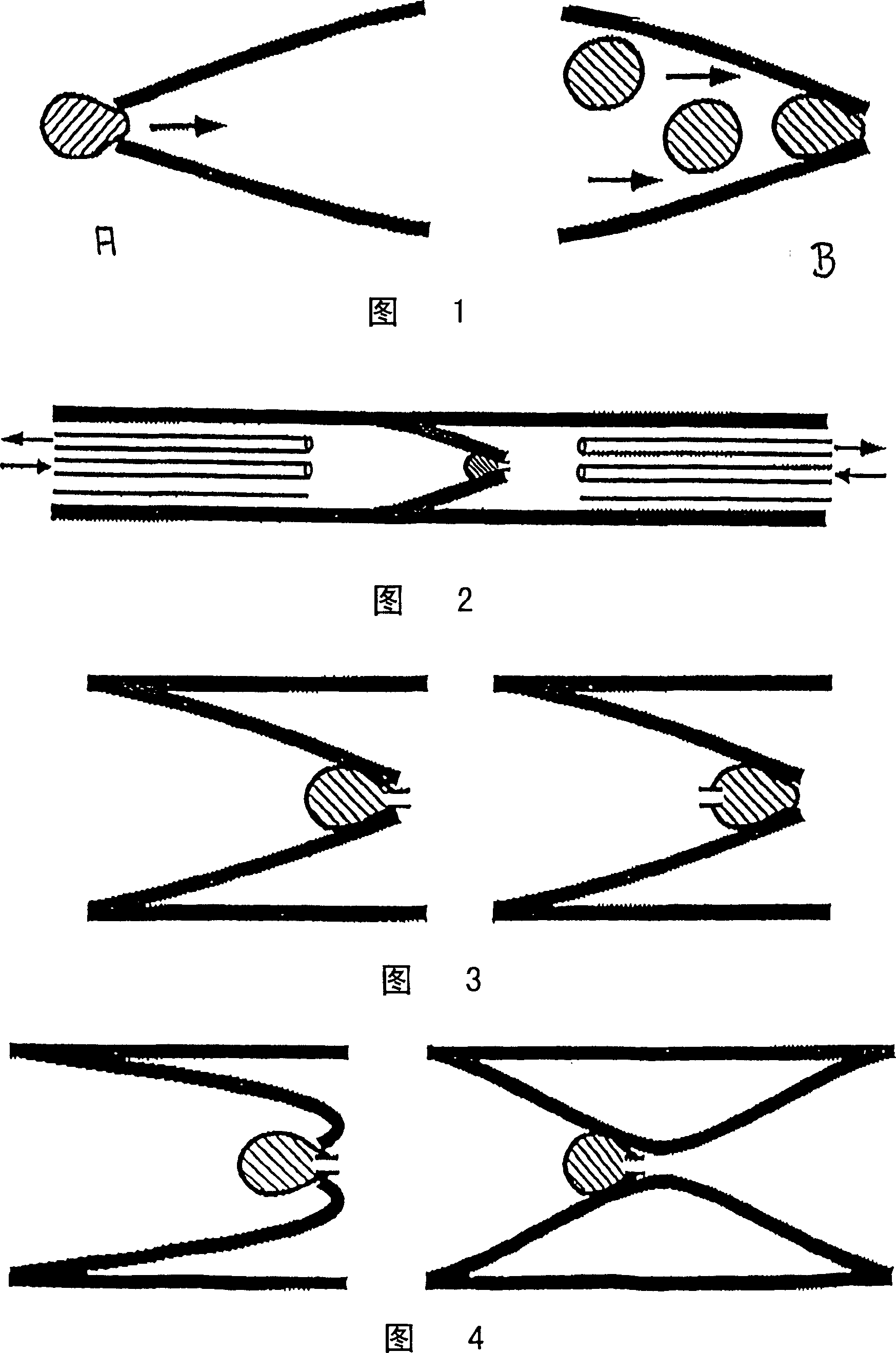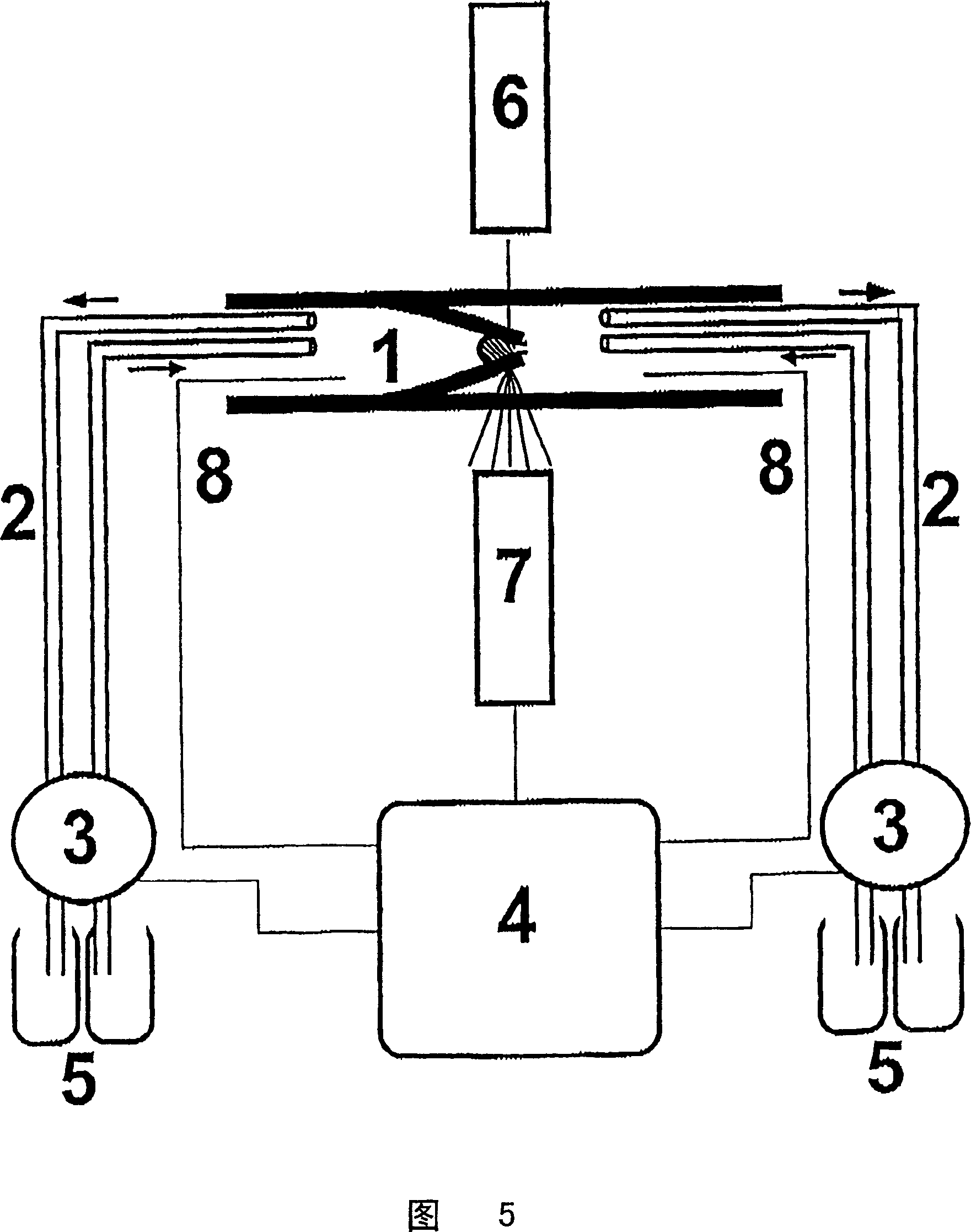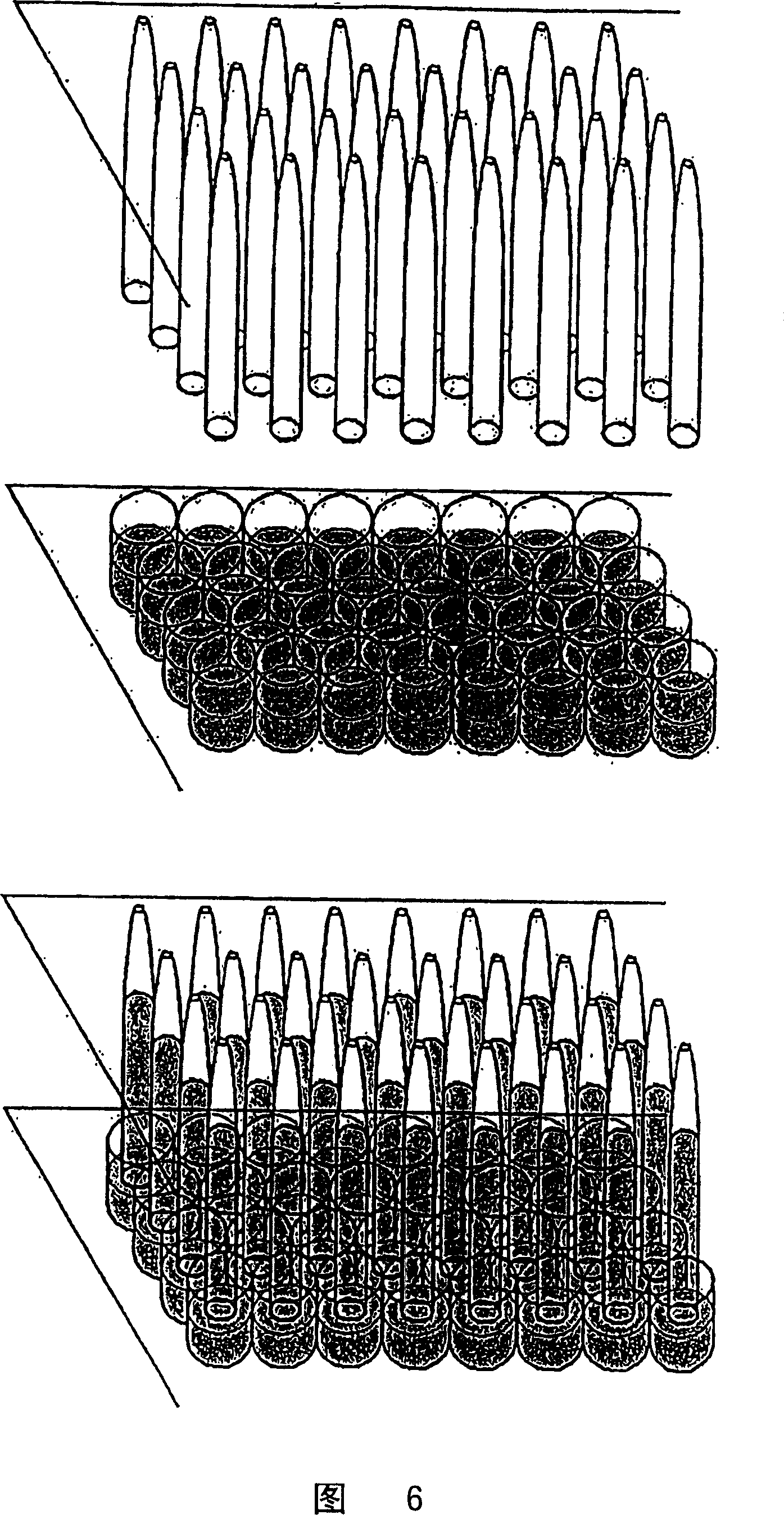Method and apparatus for patch-clamp measurements on cells
A patch clamp technology, patch clamp technology, applied in the direction of measuring devices, biochemical cleaning devices, biochemical equipment and methods, etc.
- Summary
- Abstract
- Description
- Claims
- Application Information
AI Technical Summary
Benefits of technology
Problems solved by technology
Method used
Image
Examples
Embodiment Construction
[0090] Figure 1 shows the difference between the method of the present invention and the existing conventional patch clamp technique. Figure 1A shows the binding (sealing) of cells to the tip of a micropipette achieved by the conventional patch clamp method. The seal is formed between the edge of the pipette opening and the cell membrane. Arrows indicate the direction of suction / flow when the pipette tip is pressed against the cells and vacuum is applied to the inside of the pipette. Figure IB shows positioning and sealing of cells by the method of the present invention. Arrows indicate the flow and / or direction of movement of the cells as the suspended cells move towards the tip of the micropipette, for example, in Figure IB there are three suspended cells moving towards the tip of the micropipette. Figure 1B also shows cells forming a seal with the inner wall of the conical pipette. Patch clamp experiments can be performed on the cells. Unlike the state of the art, the m...
PUM
 Login to View More
Login to View More Abstract
Description
Claims
Application Information
 Login to View More
Login to View More - R&D
- Intellectual Property
- Life Sciences
- Materials
- Tech Scout
- Unparalleled Data Quality
- Higher Quality Content
- 60% Fewer Hallucinations
Browse by: Latest US Patents, China's latest patents, Technical Efficacy Thesaurus, Application Domain, Technology Topic, Popular Technical Reports.
© 2025 PatSnap. All rights reserved.Legal|Privacy policy|Modern Slavery Act Transparency Statement|Sitemap|About US| Contact US: help@patsnap.com



